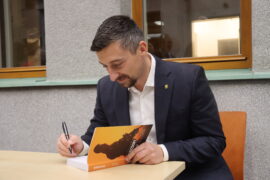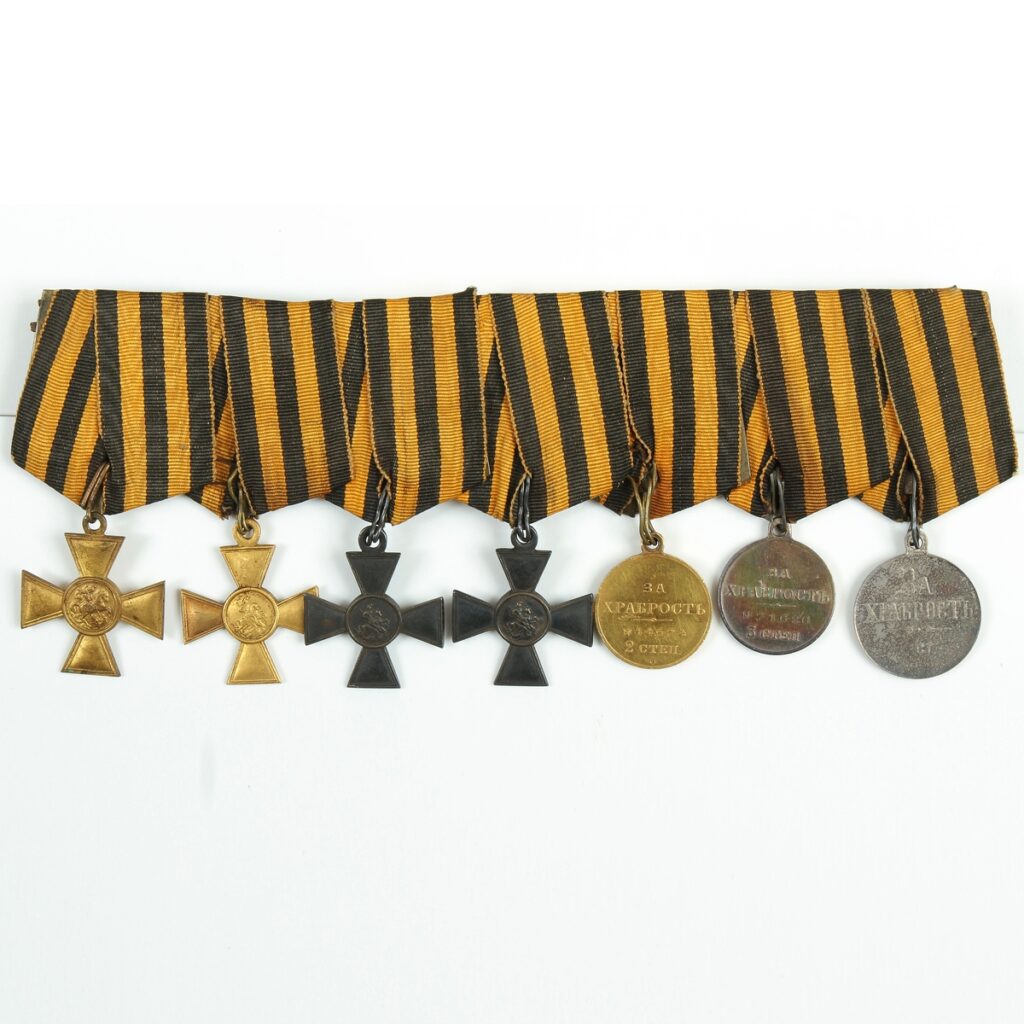
10 Russian Military Awards awarded to Legionary Karel Vašátko - also called "Full Cavalier of Saint George" (Cross of Saint George 1-4th Degree, Medal For Bravery 2-4th Degree). Laureate´s Copy of the Period, 1915–1918
Fotogalerie
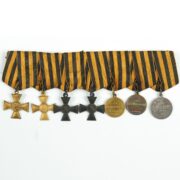
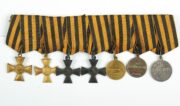

Karel Vasatko is undoubtedly one of the most famous personalities in the ranks of the Czechoslovak legions in Russia and his photographs with the characteristic bandage on his wounded head are now notoriously known. Karel Vasatko participated in the Battle of Zborov, similarly to many other Czechoslovak officers, and suffered serious injuries there. While many of the officers who fought there later were promoted to the level of generalship after the establishment of the Czechoslovak Republic, this native of Litohrad in the Rychnov region did not enjoy a similar career development. His life was ended in January 1919 by post-surgical complications following a procedure performed to heal a head wound. The remains of Karel Vasatko were transferred from Chelyabinsk to Czechoslovakia in 1933 and placed in the Liberation Memorial in Vitkov together with some items from his personal estate. As a result of the events of March 1939, the remains were transferred to the cemetery in Solnica near Vasatko’s native Litohrad during WWII. The objects from the estate of Karel Vasatko had to be hidden for the entire duration of the Protectorate. Among these artefacts was also a set of Russian decorations that Karel Vasatko had received during his service on the Eastern Front. These are the Cross of St. George and the Medal of Bravery.
The bar of badges (kolodka) with Karel Vasatko’s decorations contains the “full knight” of St. George, i.e. all four classes of the Saint George's Cross for courage, and the Russian medals for bravery of the 2nd Class (gold) and 3rd and 4th Classes (silver). Unlike contemporary photographs, the classes of the identical metal of the crosses and medals (1st and 2nd gold, 3rd and 4th silver) are not distinguished by the design of the ribbon, referred to as the bow for the 1st and 3rd classes, but all have a ribbon folded into a pentagon. In this respect, it should be mentioned with respect to the presented examples of Karel Vasatko’s decorations from the collection of the Military History Institute that they are only contemporary copies of the originals donated by Karel Vasatko to the Golden Treasure of Russia before the Battle of Zborov.
The bearer copies were donated to the collection of the Liberation Memorial in October 1930. As a result of the occupation in 1939, and due to fears of confiscation by the occupying authorities, the donation of the entire set to the Czechoslovak Department of the Darney Museum was faked with the fictitious date of 2 September 1937. In reality, the full set, together with other parts of Karel Vasatko’s estate, was hidden in several places – in Pribram with Mrs. Ruzickova, in Brezove Hory at the Vojtech mine, and in Hodkovicky with Major Korecky. After the end of WWII, a set of these copies of Karel Vasatko’ s decorations was handed back to the collection of the Liberation Memorial on 2 August 1945.
Aktuálně
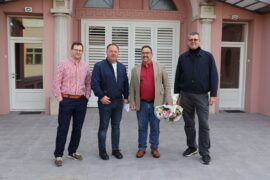
Výzkum u českých krajanů v Chorvatsku
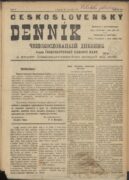
Československý deník sehrál v životě legionářů v Rusku velmi důležitou roli. Poprvé vyšel v prosinci 1917

Děkujeme za podporu pro válečné veterány. Sbírka DiGiMÁK vynesla 450 tisíc korun
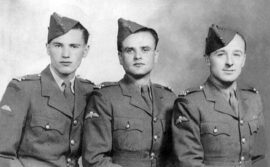
Tak trochu zamrzlé spojení
